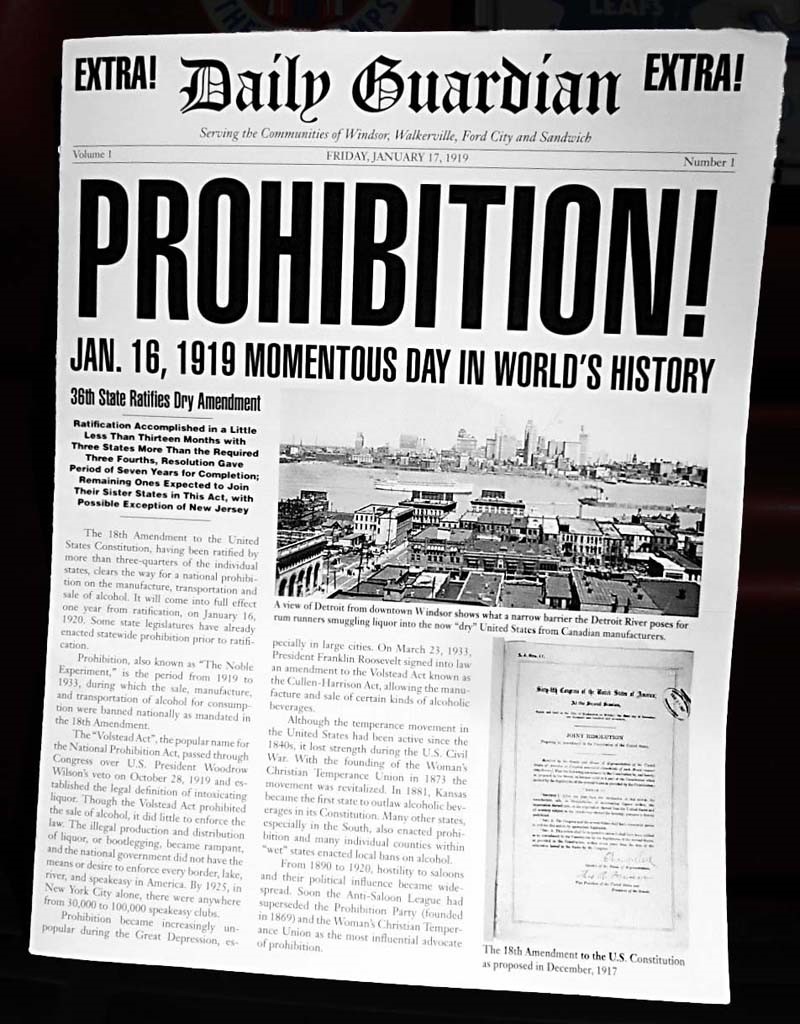by George Mathewson for the Sarnia Observer
(2003) From the illicit rum-running of “Scarface” Capone to the location of the Sarnia Golf & Curling Club lounge, alcohol helped shape the social history of Sarnia-Lambton. With its miles of lonely shoreline, the St. Clair River was a porous border for rum-runners during the U.S. Prohibition of 1920 to 1933, when Canadian liquor found its way to parched Americans via speedy boats.
Observer sports writer O.N. “Red” Wilson once rode shotgun on a smuggler’s run from the Point Edward riverfront. “First intimation that anything was wrong was when one of the crew shoved me off a pile of cartons of Johnny Walker’s Red Label. “Lie down buster, they’re shooting at us,” Wilson recalled the man saying later. “I glued my thin frame to the bottom of the boat and listened to the U.S. River Patrol blasting away into the darkness at a boat which was too fast.” The boat dropped its cargo with a waiting truck and returned home safely. It was the writer’s one and only trip.
Other smuggling hot spots included Stag Island, home to hidden canals, and Sombra, where the legendary gangster al Capone stationed his henchmen and was a frequent guest at the Grand Union Hotel, according to local legend.
A number of local families did well in this “export” trade. Sarnia’s waterfront even boasted a distillery and brewery that churned out products labeled to mimic popular American brands.
When early settlers arrived in Lambton, they found booze a fixture of frontier life. During a stopover in Warwick in 1834, Froome Talfourd noticed the landlord’s entire larder consisted of a barrel of flour, a barrel of pork, and a barrel of whisky. Imbibing was so endemic that the Rev. James Douce wrote in 1839: “The swearing, drunkenness and wickedness on the river and especially in Sarnia village , frequently presses down my mind.”
But Sarnia was also fertile ground for the temperance movement, launching several residents into national prominence in Victorian prohibition campaigns. Notables included Malcolm Cameron, an avowed teetotaler (who didn’t mind a drop being served at his campaign meetings) and Alexander Mackenzie, the prime minister who spearheaded passage of the first Temperance Act.
The temperance camp had mixed success in Canada. The local option version of prohibition, for example, contributed to the odd configuration of the Sarnia Golf and Curling Club. In the 1950s, the the grounds on which the club house stood were annexed to Point Edward so that a liquor license could be obtained – Sarnia being officially a `dry` community at the time. The course straddles two municipalities to this day.


